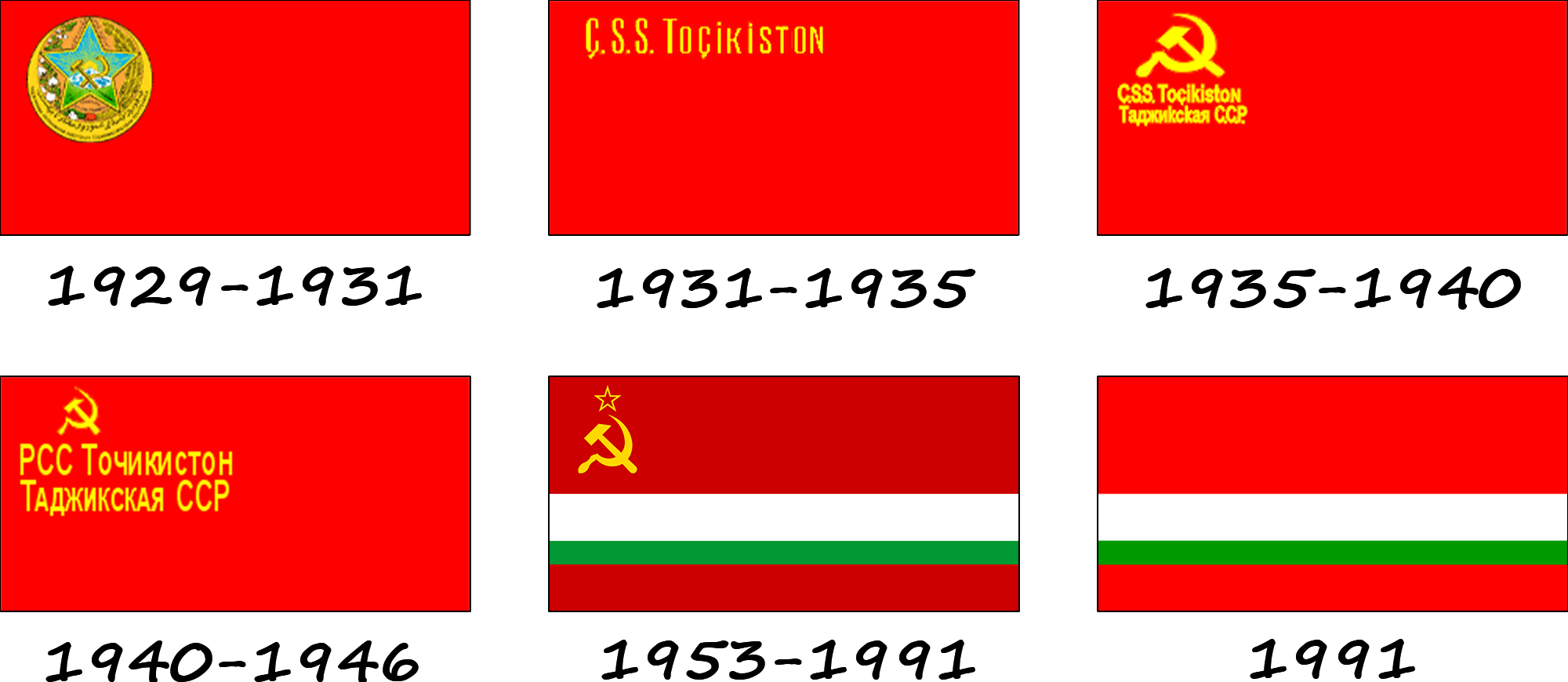The earliest references to the use of flags by Tajik ancestors are preserved in the Avesta. For example, in the first chapter of the Rig Veda, Bactria is characterized as "beautiful, with flags raised high". Some researchers suggest that the flags mentioned in the Avesta are similar to the famous "Cavian flags" of later times or to the ancient Roman "vexillum" - square flags hanging from a horizontal bar attached to a spear, like modern church banners.
The Tajik Autonomous Soviet Socialist Republic was established on October 14, 1924. According to the resolution of the Presidium of the Central Executive Committee of the Tajik ASSR of February 23, 1929, the national flag was a red cloth with the state emblem in the upper left corner, consisting of a golden dosa (Tajik sickle) and hammer placed crosswise with their arms down and placed on a five-pointed star, on which the sun rises in the blue sky from behind snow-covered mountains. The star is surrounded by a crown of ears of wheat on the right and a branch of cotton on the left against an orange background. The crown is tied at the bottom with a red ribbon.
Below the star is an inscription in Russian: "Proletarians of all countries, unite!". Above the star is the same slogan in Persian: "پرالتارهای همۀ جهان یک شوید". All inscriptions are arranged in a semicircle on a golden crescent-shaped ribbon.

In the period from 1931 to 1946, the flag had a similar design and differed little. With the unification of the Republic of Tajikistan and the adoption of the new Constitution on February 25, 1931, its flag was a red cloth with the inscription "ÇSS Toçikiston". Later, a hammer and sickle were added to the inscription, and later the inscription was changed to the Tajik "RSS Toçikiston" and the Russian "Tajik SSR".
From 1953 to 1991, the flag took on a new look. It was now divided into two parts: the upper part was red with a hammer, sickle and star above it, and the lower part had two stripes of white and green, with the white stripe twice as wide as the green one. The white color symbolizes the cultivation of cotton, and the green color symbolizes other agricultural products.
In 1991, all the symbols were removed from the flag, leaving only the color composition, changing the tone of red to light. Finally, on November 24, 1992, the flag acquired its modern look: a red, white, and green tricolor with a golden crown and seven stars in the middle.




